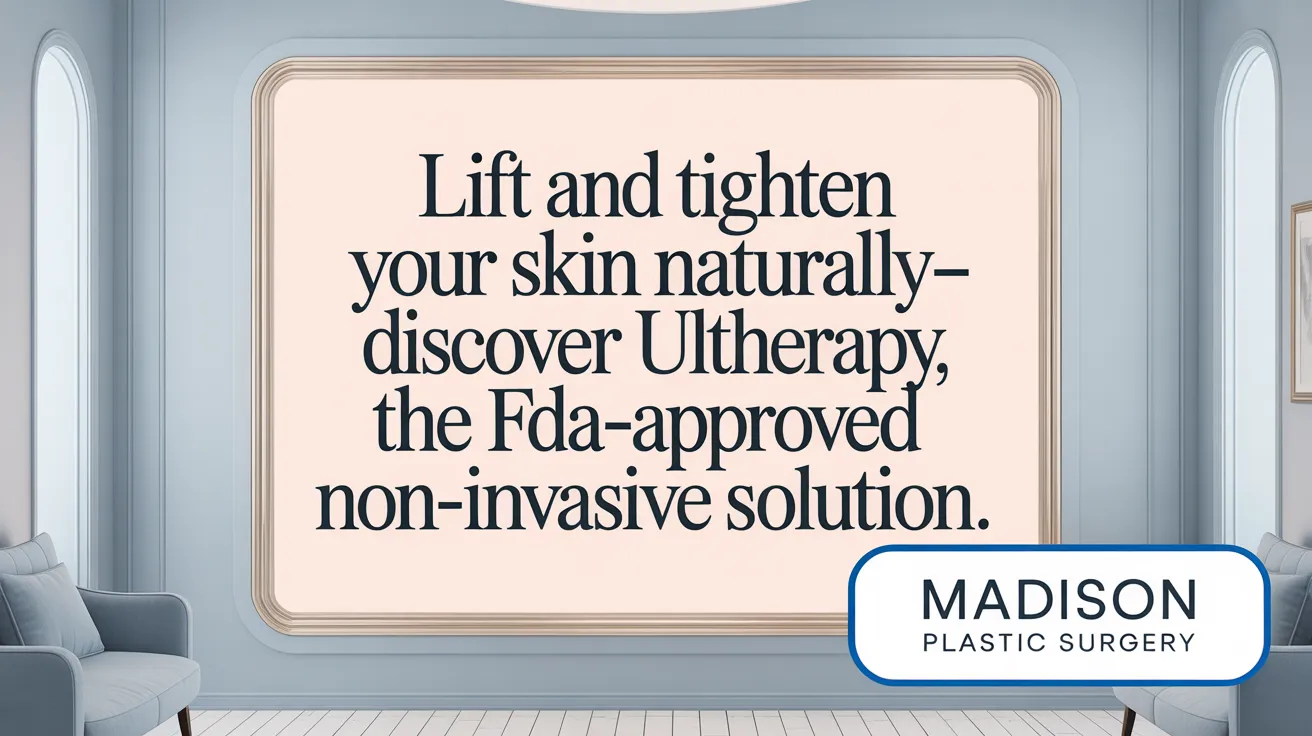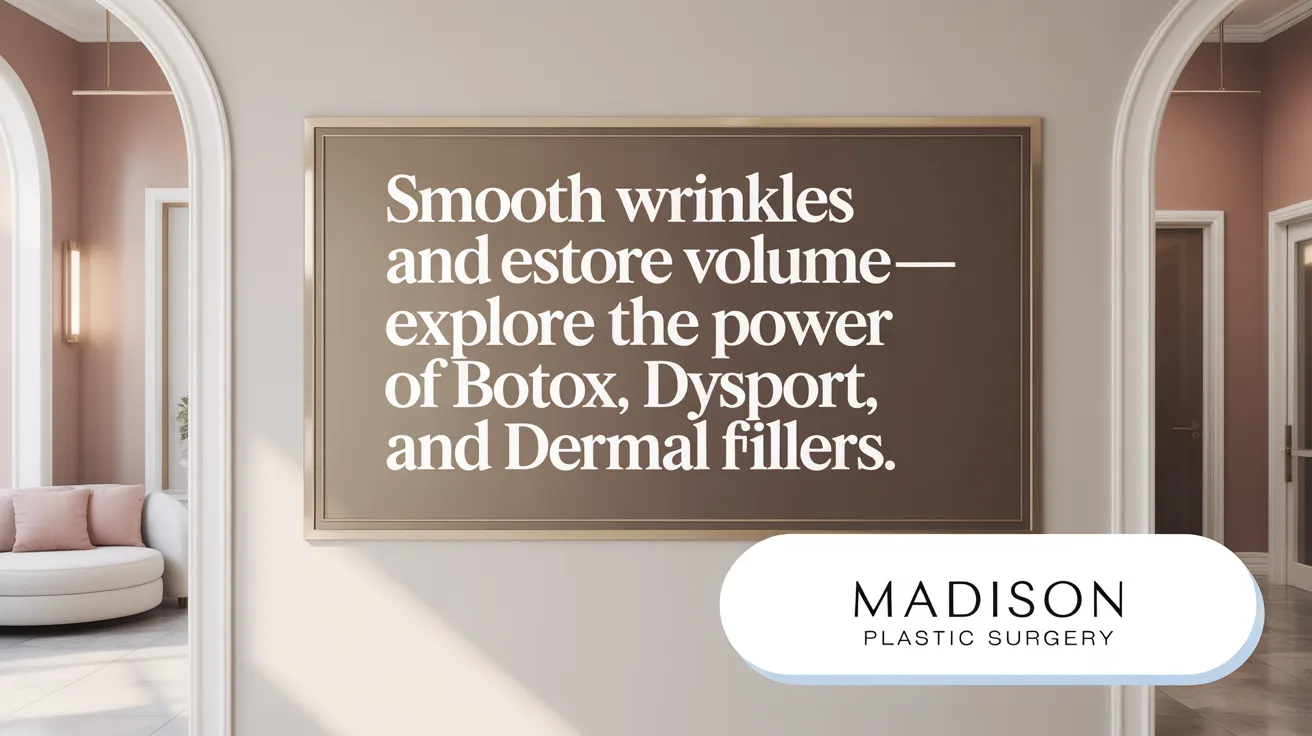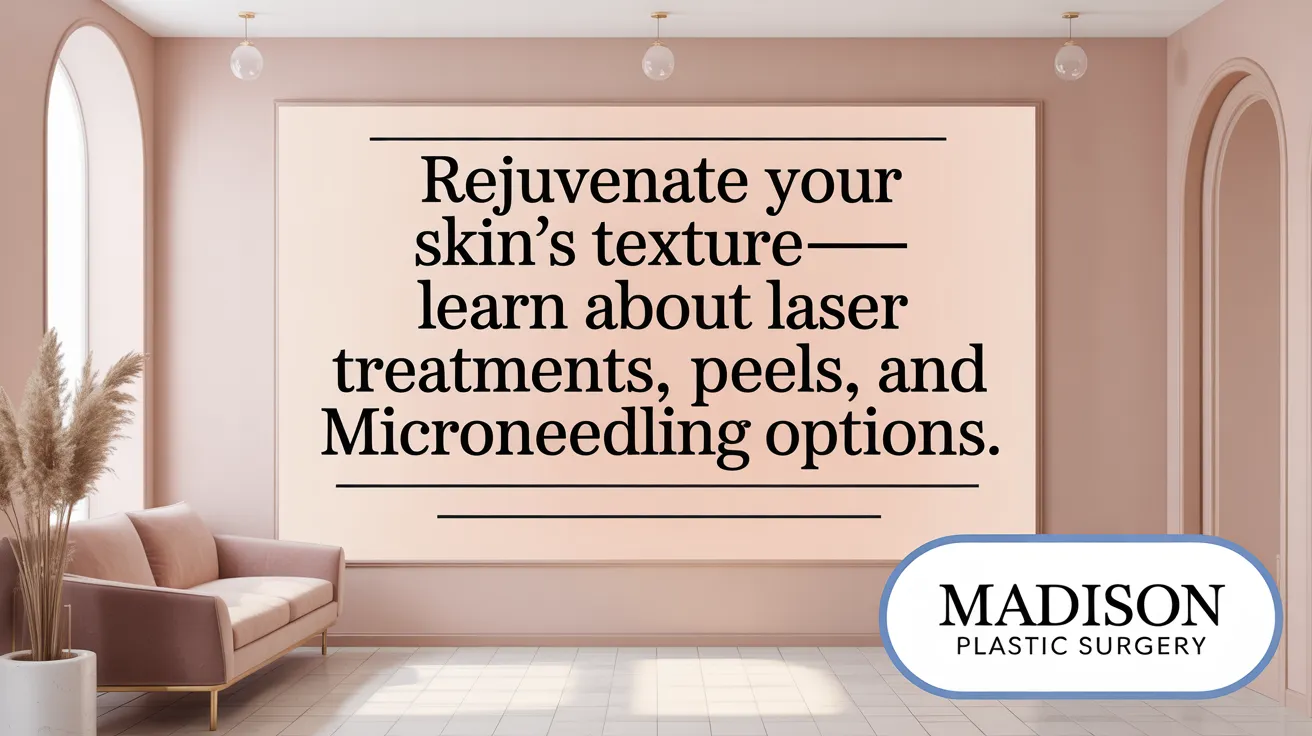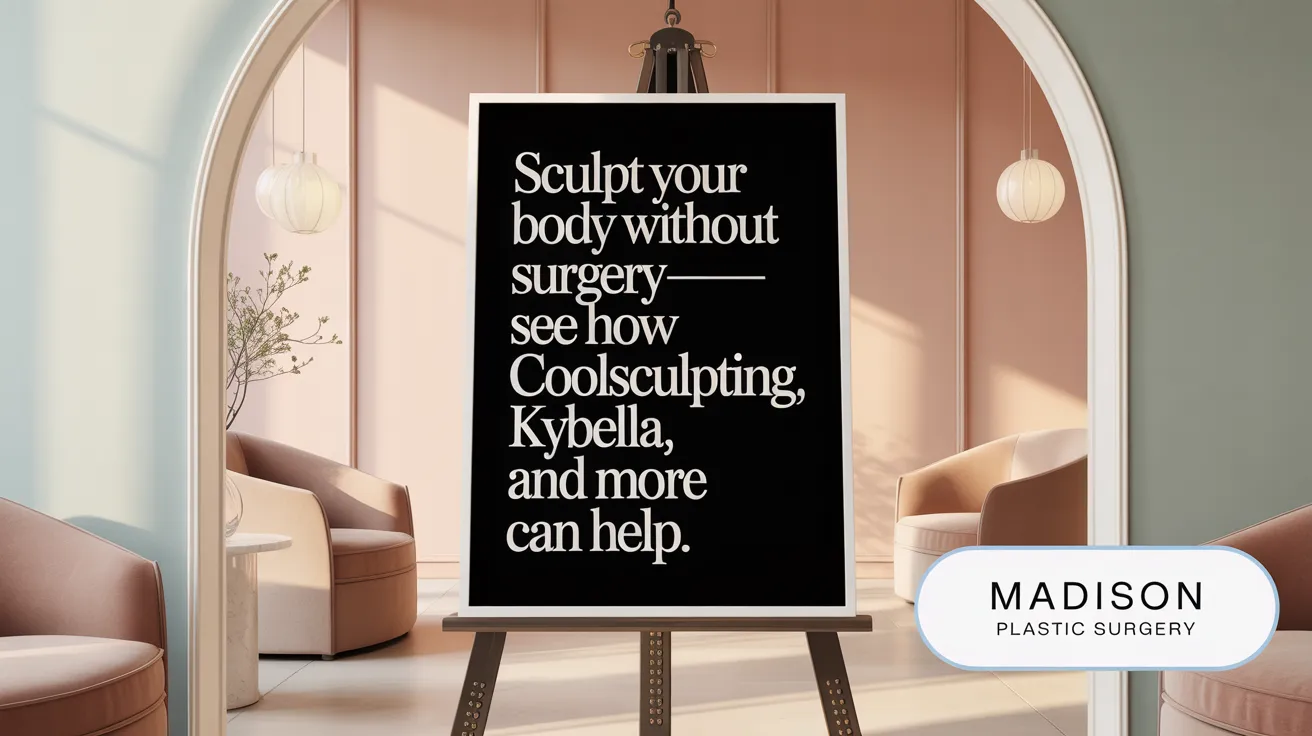Revolutionizing Aesthetic Care with Non-Surgical Innovations
In the evolving world of cosmetic treatments, non-surgical options have surged in popularity due to their effectiveness, safety, and minimal downtime. These treatments offer patients a chance to rejuvenate their appearance naturally without enduring the risks and recovery associated with surgery. This article delves into the most impactful non-surgical cosmetic procedures that deliver real and lasting results, highlighting their technologies, benefits, and suitability for different aesthetic goals.
Advanced Skin Lifting with Ultherapy®: The Only FDA-Cleared Non-Invasive Skin Lift

What is Ultherapy and how does it work?
Ultherapy is a cutting-edge Ultherapy non-surgical ultrasound treatment that uses focused ultrasound energy to lift and tighten the skin. Approved by the FDA, it precisely targets the deeper layers of skin and connective tissue without disrupting the surface, stimulating the body's natural collagen production for gradual skin regeneration through Collagen stimulation with focused ultrasound energy.
What areas can Ultherapy treat and how long does a session last?
Ultherapy is versatile in treating multiple areas including the face, neck, brow, chin, and chest. A typical treatment session targeting the face or neck lasts about 90-minute face or neck treatment duration, allowing comprehensive coverage in one appointment.
What kind of results can patients expect and when?
Patients may notice some immediate lifting effects shortly after the procedure. The most significant improvements develop gradually over Gradual results over 2-3 months as the newly stimulated collagen strengthens and regenerates important structural tissues, providing sustained lifting effects that can last six months or more.
Is there downtime and how safe is Ultherapy?
One of Ultherapy's major advantages is its safety and convenience. There is No downtime with Ultherapy, meaning patients can immediately return to their everyday activities post-treatment. Being non-invasive and performed by licensed professionals, it has a well-established safety profile.
How does Ultherapy compare with surgical lifts?
Unlike surgical facelifts that require incisions, anesthesia, and recovery time, Ultherapy offers a FDA-cleared non-invasive skin lifting alternative that delivers lifting and tightening with minimal invasiveness. While the lifting effect may be subtler and longer to manifest compared to surgery, Ultherapy is ideal for those seeking natural results without the risks or downtime associated with surgical procedures.
Injectables: Botox, Dysport, and Dermal Fillers for Dynamic Wrinkles and Volume Restoration

How do Botox and Dysport work and how long do they last?
Botox and Dysport are popular injectable neurotoxins designed to relax facial muscles. They are mainly used to treat dynamic wrinkles—such as forehead lines, crow’s feet, and frown lines—that form due to repeated muscle contractions. By limiting muscle activity, these injectables smooth out wrinkles and reduce their appearance effectively. Results from Botox and Dysport typically start to become noticeable within a few days to two weeks and last about three to six months. Dysport often acts faster, showing effects sometimes within a day or two.
What are dermal fillers and what areas do they treat?
Dermal fillers are gel-like substances injected beneath the skin to restore facial volume, smooth wrinkles, and enhance facial contours. They address various concerns including sunken cheeks, thin lips, nasolabial folds, and chin lines. Common ingredients include hyaluronic acid, calcium hydroxylapatite, and poly-L-lactic acid. Fillers help hydrate the skin and boost collagen and elastin indirectly, providing a more youthful and plump appearance.
What is the typical duration of dermal filler results?
The longevity of dermal fillers varies based on their composition. Hyaluronic acid fillers like Juvéderm and Restylane generally last between 6 to 12 months. Other fillers such as Sculptra, which stimulate collagen production, can provide effects lasting up to two years or longer. Calcium hydroxylapatite fillers also offer about a year of improvement. The duration depends on factors including the filler type, treatment area, and individual metabolism.
Why is provider expertise important for injectable treatments?
Achieving natural and attractive results requires expert knowledge of facial anatomy and precise injection techniques. A skilled provider can minimize risks such as bruising, swelling, asymmetry, or overcorrection. Proper training ensures safe administration and a balanced enhancement that complements the individual’s features. Consultation with experienced medical professionals is essential to tailor treatments to each patient’s needs and expectations.
Skin Resurfacing and Texture Enhancement: Laser Treatments, Chemical Peels, and Microneedling

What are the benefits of laser skin resurfacing?
Laser skin resurfacing is a powerful option to enhance skin texture and appearance. It stimulates collagen production for skin improvement to reduce fine lines, wrinkles, acne scars, pigmentation irregularities, and sun damage. By removing damaged skin layers or heating beneath the surface, lasers promote skin rejuvenation and create a smoother, more youthful complexion. For detailed insights, see Laser skin resurfacing, ablative vs non-ablative laser resurfacing, injectable neurotoxins, dermal fillers, and expert treatments.
What is the role of chemical peels in skin rejuvenation?
Chemical peels work by exfoliating and eliminating the outermost damaged skin layers. This process improves skin tone, texture, and pigmentation irregularities. Peels can effectively treat acne scars and signs of aging like fine lines and uneven skin tone. Their customizable strengths make them suitable for various skin types and conditions. More on chemical peels for skin tone, acne, scars, and aging signs can be found here.
How does microneedling aid skin quality?
Microneedling enhances skin quality by creating controlled micro-injuries that stimulate the body’s natural collagen and elastin production. This promotes healing and regeneration, helping to diminish fine lines, wrinkles, and acne scars while improving overall skin elasticity and texture. See also microneedling and RF combination for collagen stimulation and skin tightening for advanced treatment options.
What about safety and recovery?
Safety and downtime depend on the treatment intensity. Gentler laser resurfacing and chemical peels often require multiple sessions with minimal recovery time, allowing patients to maintain their routines. More aggressive lasers and deeper chemical peels may demand longer downtime to achieve more dramatic results. Microneedling typically involves minimal downtime. Choosing qualified, experienced providers is essential to ensure safe treatment delivery and optimize outcomes. For guidance, refer to choosing a board-certified facial cosmetic surgeon and proper injector training.
Non-Surgical Fat Reduction and Contouring: CoolSculpting, Kybella, and Emerging Technologies

What non-surgical options are available for fat reduction and contouring?
Several effective non-surgical fat reduction methods exist for reducing localized fat deposits and sculpting the body without surgery. Prominent options include CoolSculpting fat reduction—which uses the cryolipolysis mechanism to freeze and destroy fat cells—and Kybella double chin reduction, an injectable treatment that dissolves fat using deoxycholic acid. Additionally, laser-based therapies like SculpSure laser fat reduction and ultrasound fat reduction technologies target stubborn areas safely and with minimal downtime.
How does CoolSculpting work and how soon are results visible?
CoolSculpting operates by controlled cooling, which freezes fat cells. Once these cells are crystallized, the body naturally eliminates them over time. Patients typically begin to notice results within 3 to 4 weeks after treatment, with the full effect developing over several months. Provided the patient maintains a stable weight, the fat reduction achieved with CoolSculpting can be permanent. Learn more about CoolSculpting fat reduction.
What does Kybella treat and what should patients expect?
Kybella double chin reduction is FDA-cleared specifically to target submental fullness, commonly referred to as a double chin. The treatment involves a series of injections that break down fat cells in the targeted area. Multiple sessions are usually necessary, spaced weeks apart, to achieve desired results. The destroyed fat cells are naturally removed by the body, and the effect is permanent for most patients.
Are these procedures suitable for weight loss?
These fat reduction treatments are designed for contouring and targeting pockets of fat resistant to diet and exercise. They are not intended as solutions for weight loss or obesity management. Ideal candidates have localized fat deposits and generally are close to their target weight. For more information on non-invasive cosmetic procedures in NYC, please consult a specialist.
Additional Treatment Details
| Procedure | Mechanism | Typical Areas Treated | Result Timeline |
|---|---|---|---|
| CoolSculpting | Freezes fat cells (cryolipolysis mechanism) | Abdomen, thighs, flanks, under chin | Results in 3-4 weeks, lasting permanently |
| Kybella | Injectable fat dissolution | Submental (under chin) | Multiple treatments; gradual results |
| SculpSure | Laser-induced fat breakdown | Abdomen, flanks | Visible over 6-12 weeks |
| Ultrasound Fat Reduction | Focused ultrasound waves | Abdomen, flanks | Effects in weeks; multiple treatments may be needed |
These procedures require little to no downtime, making them convenient for patients seeking subtle and lasting body sculpting without surgery. Maintaining a healthy lifestyle helps sustain the outcomes. For more on non-surgical body contouring, see relevant resources.
Selecting the Right Treatment: Patient Goals, Safety, and Longevity of Non-Surgical Aesthetics

What motivates patients to choose non-surgical cosmetic treatments?
Patients primarily seek non-surgical procedures to achieve natural rejuvenation. Many want to feel younger, more confident, and refreshed through subtle, gradual improvements rather than dramatic changes. This approach aligns with the preference for treatments that enhance appearance without the downtime or risks of surgery. For more details on popular procedures and motivations, see Non-Surgical Facial Treatments and Patients seeking non-surgical facial aesthetic procedures.
How important is the patient-provider relationship and consultation?
A thorough consultation is essential for success in non-surgical aesthetics. It helps set realistic expectations, tailor treatment plans to the patient's unique skin concerns, and ensure safety. Choosing experienced, board-certified providers is critical because they understand facial anatomy, appropriate treatment options, and can minimize risks such as complications or unnatural results. Refer to Qualified providers and patient consultation and Patient quality of life and individualized care for more information.
How long do the results of non-surgical treatments typically last?
The duration of effects varies by procedure:
- Botox and Dysport: 3 to 6 months (Botox wrinkle reduction, Duration of neurotoxin effects)
- Dermal fillers: Typically 6 to 24 months, depending on filler type (Dermal filler treatments, Filler longevity)
- Ultherapy: Results develop over 2 to 3 months and can last up to one year (Ultherapy non-surgical ultrasound treatment, Collagen stimulation with Ultherapy)
- Chemical peels and laser resurfacing: Provide lasting improvements in skin texture and tone (Chemical peels and IPL benefits, Laser skin resurfacing techniques
- Non-surgical fat reduction: Permanent fat loss, maintained with a healthy lifestyle (Cryolipolysis mechanism
Patients may require maintenance treatments to sustain results over time (Non-surgical procedure maintenance.
Can multiple procedures be combined?
Yes, combining different non-surgical treatments is common and effective. For example, injectables can smooth wrinkles, dermal fillers restore volume, and skin resurfacing improves texture. Additionally, skin tightening treatments like Ultherapy non-surgical ultrasound treatment can complement these by stimulating collagen. This combination approach addresses several signs of aging concurrently, offering comprehensive rejuvenation without surgery. Refer to Non-surgical skin tightening treatments and Combination of injectables and skin treatment for more information.
Importance of personalized consultation
Personalized consultation ensures treatments match patient goals and skin conditions. It also accounts for demographic factors influencing treatment preferences and outcomes. Understanding a patient's history and motivations helps providers design a safe, effective plan promoting natural-looking results with minimal risk and downtime. For further reading, see Individualized patient care in aesthetics and Benefits of non-invasive treatments.
Embrace the Future of Beauty with Confidence and Care
Non-surgical cosmetic treatments offer sophisticated, effective solutions for those seeking natural-looking rejuvenation without surgery. Innovations like Ultherapy, injectables, skin resurfacing, and fat reduction empower patients to address signs of aging and contour concerns safely with minimal downtime. Choosing qualified providers and personalized treatment plans ensures optimal outcomes that align with individual goals and lifestyles. As these technologies continue to evolve, non-surgical options remain at the forefront of aesthetic care, delivering real results that enhance confidence and wellbeing.
